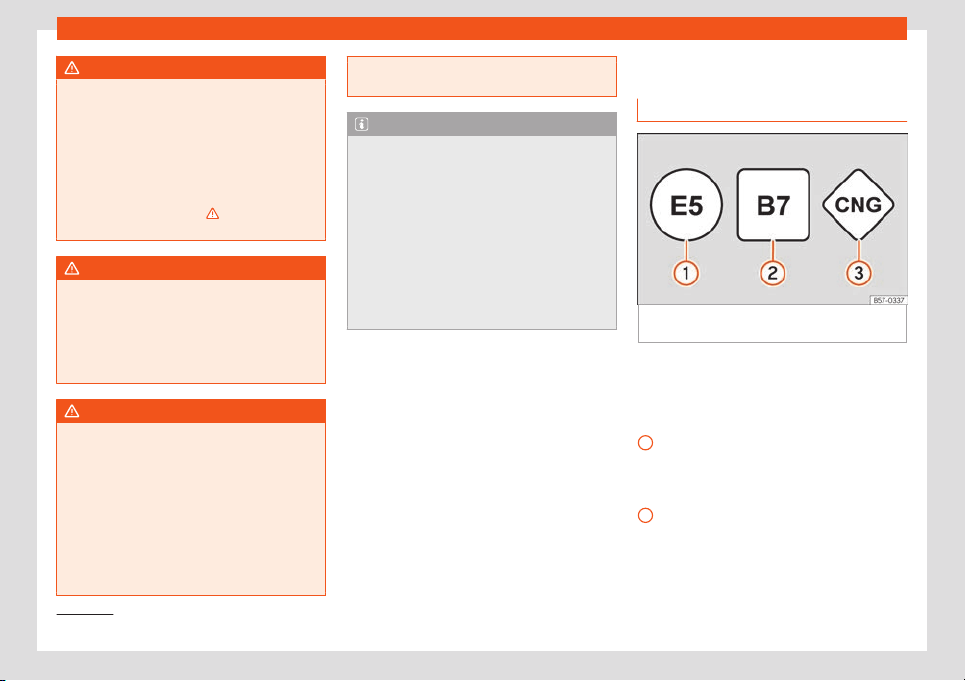Loading ...
Loading ...
Loading ...

Practical tips
WARNING
Natural gas is a highly explosive, easily
flammabl
e substance. Incorrect handling
of the natural gas can cause accidents se-
rious burns and other injuries.
●
Before refuelling with natural gas, en-
gage the filling mouth correctly. If you can
smell gas, stop refuelling immediately.
●
Read and take note
›››
in Natural gas
on page 273
.
WARNING
The vehicle is not suitable for liquefied nat-
ural gas (LNG) or liquefied petr
ol gas (LPG),
so LNG or LPG should not be used under
any circumstances. Liquid gas can cause
an explosion of the natural gas tanks and
cause severe injuries! .
WARNING
If the vehicle underbody touches the
ground or in the e
vent of a rear collision,
there could be damage to the natural gas
tanks. If damaged, natural gas tanks are
full of fuel and can explode, causing seri-
ous or fatal injuries.
●
Even if you don't notice the smell of gas,
take the vehicle to a specialised workshop
immediately and have the natural gas sys-
tem checked. Do not refuel natural gas
again until the natural gas system has been
inspected.
Note
●
The filling no
zzl
es of natural gas pumps
can differ in the way they are operated. Ask
a qualified employee at the petrol station
to do the refuelling if you do not know how.
●
Noises heard when refuelling are normal
and do not indicate damage in the system.
●
The vehicle natural gas system is pre-
pared both for refuelling with a small com-
pressor (slow refuel) and a large compres-
sor (fast refuel) at natural gas service sta-
tions.
Fuel types
Identification of fuel
s
1)
Fig. 194 Identification of fuels according to
Eur
opean Union (EU) Dir
ective 2014/94/
Fuels are identified by different symbols on
the pump and on your v
ehicl
e's tank flap. The
identification serves to prevent confusion
when choosing the fuel.
Petrol with ethanol (“E” stands for Etha-
nol). The number indicates the percent-
age of ethanol in the petrol. “E5” means,
for example, an ethanol ratio of 5% max.
Diesel with biodiesel (“B” stands for Bio-
diesel). The number indicates the per-
centage of biodiesel in the diesel. “B7”
means, for example, a proportion of bio-
diesel of max. 7%.
1
2
1)
Depending on country
270
Loading ...
Loading ...
Loading ...